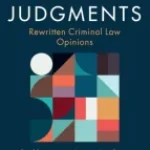Free Joan Little: The Politics of Race, Sexual Violence, and Imprisonment
 Author: Christina Greene
Author: Christina Greene
Publisher: UNC Press, 2022. 362 pages.
Reviewer: Elizabeth Barahona | June 2023
Christina Greene’s Free Joan Little (2022) closely studies the life, trials, and aftermath of Joan Little’s 1975 trial and uses it as a foundation to explain the history of women’s anti-rape activism in the second half of the twentieth century. Little’s 1975 case garnered national and international attention because it revealed the state of Black women in the United States carceral system to a global audience. The exploration of Little’s childhood, the context of the case, the public discourse, and similar suits provides a rich understanding of the role of race, gender, class, and geography in the 1970s and 1980s criminal justice system. Greene argues that women of color, especially Black women, found creative ways to fight against sexual abuse, state violence, and racism, often through a holistic lens, addressing housing, healthcare, and education. Using a strong narrative voice, Greene envelops the reader in the story of empowered women while providing a valuable history of women’s activism in the 1970s and 1980s.
Greene divides the book into three parts made up of smaller sections. The first part of the book, “Jim Crow Justice and the Civil Rights Trial of the 1970s,” dives into Joan Little’s life growing up in Washington, North Carolina, a community that practiced intense racism and sexism, and the role of gender, class, and race in her far-reaching 1975 trial. The second part of the book, “This Army of the Wronged: Forgotten Women and Prison Organizing in the Civil Rights-Black Power Era,” expands on the trial and studies the North Carolina carceral system and prison activism in the state. The third part of the book, “Who Will Revere the Black Woman?…To Whom Will She Cry Rape? Carceral Politics and Organizing Against Sexual Violence,” focuses on women of color, predominantly Black women, and white allies who fought against violence and sexual abuse through different forms of collective action. The second and third parts of the book expand beyond North Carolina and highlight women in other cities and prisons who create institutions and written art. These women were against a racist and sexist criminal justice system, similar to Joan Little in North Carolina.
Free Joan Little (2022) has a strong narrative voice and insights from scholars from different fields. Greene uses a variety of newspapers, interviews, archives, and images about the Black Panthers, prison activism, and the history of Jim Crow segregation and slavery. Together, these sources told the story of Joan Little and her impact on race, gender, and geography in the United States and social movement culture in the second half of the twentieth century. Greene also relies on the secondary literature of different historians and cultural theorists like Heather Thompson, Michael Hames-Garcia, Daina Ramey Berry, Kali Gross, and others about mass incarceration, African American activism, and social movements. Including these scholars enriched Greene’s critical lens of the carceral system and the treatment of Black women.
Through her writing style, Greene builds on the drama, suffering, and injustices surrounding Little’s 1975 trial. She uses anecdotes about Little’s life and small sections within the three larger parts of the book to keep readers engaged. Diving into the life of Little and the idiosyncrasies of the trial, its judge, the attorneys, the jury, and the case evidence itself allows Greene to relay the importance of the mishandling of evidence, the racism of the jury, and how Little’s reputation, race, and gender were also on trial. Each section of Part One, “Jim Crow Justice and the Civil Rights Trial of the 1970s,” provides a history of North Carolina’s race relations, segregation, class issues, and the criminal justice system in the 1960s, 1970s, and 1980s. Each part reveals the ties that maintained the connection between North Carolina in 1975 with its history of Jim Crow segregation and slavery.
After delving into the details of Little’s life and trial, Greene also takes special care to connect the case to the national political context. When describing the harshness of Little’s sentencing in 1975, she describes it within the more prominent role of tough-on-crime policies and the aftermath of the War on Crime. Greene connects national and state actions to regional and local consequences that affect everyday people. Similarly, even the legal defense strategies made by the prosecution and defense in Little’s trial affected other cases in which women experienced sexual violence. In Little’s case, the defense framed her as a victim of white supremacy and misogyny and as an everywoman that unified Black and white women. Activist organizations like the National Organization for Women (NOW) and the Black Panther Party had their say in campaigns defending Joan Little, noting the pros and cons of using a specific unifying strategy. Ultimately, Little’s trial inspired organizations to reframe their views about rape, gender, sexual abuse, and Black womanhood–reminding them that unity was necessary for a positive outcome for women of color. The trial revealed what was already known to many: that gendered respectability politics of the 1960s Civil Rights Movement still had continued importance in the 1970s and 1980s.
Part Two, “This Army of the Wronged: Forgotten Women and Prison Organizing in the Civil Rights-Black Power Era,” connects how Little’s case was woven into the larger fabric of slavery, the law enforcement system, and the proliferation of mass incarceration in the second half of the twentieth century. Prisoners, including Little, organized protests that addressed many issues like horrid working conditions, inadequate healthcare, and the prevalence of sexual abuse within prisons for both men and women. Each protest, lawsuit, letter, and death of an inmate was a testament that the prison system was created and used to control, surveil, and confine its prisoners, rather than making any serious effort to reform them. The few conditions within the prisons that were close to livable directly resulted from the protests and sacrifices made by incarcerated men and women alongside support from their communities on the outside.
Using legal suits, their bodies, and the written word, men and women in North Carolina, especially African Americans, protested the tough-on-crime policies and longstanding inhumane prison conditions that had been implemented since the era of slavery and Jim Crow. Greene takes special care to describe how, during this prison movement of the 1960s, 1970s, and 1980s, women, especially African American women, became politicized toward the arc of justice for their fellow women, prisoners, and survivors of sexual abuse. Little’s experience in prison also politicized her, taking inspiration from the literature of Asata Shakur and sharpening her political acumen around prison abolition and sexual violence against women. Joan Little understood that the prison system in North Carolina, the abuse, and the blurred lines between freedom and unfreedom extended across the country. After the trial, Little used her celebrity status to share her message about uniting for freedom and abolishing the prison system that threatened the lives of all human beings.
In Part Three, “Who Will Revere the Black Woman?… To Whom Will She Cry Rape? Carceral Politics and Organizing Against Sexual Violence,” Greene connects Little’s trial with the trials of three women: Yvonne Wanrow, a Native American woman, Inez Garcia, a Latina woman, and Dessie X. Woods, an African American woman. The three cases took place in the 1970s and 1980s, around the time of Little’s case, and they revealed how the reputation, education, and sexuality of women of color were also on trial in cases in which they defended themselves against sexual abusers. Greene notes that, similar to Little’s trial, the judge, the prosecutors, the defense attorneys, and even the jurors practiced violent sexism; they exacerbated gendered stereotypes and racism in the courtroom. Attorneys taunted the women about their sexual assault experience, judges barred sexual assault testimonies, and juror’s violent comments towards the women revealed the expansiveness of violent rape culture in the 1970s and 1980s. The women on trial were up against a more extensive system of racism, sexism, and violence that worked hard to erode their hopes of justice. Each case became an important legal precedent for women and sexual abuse, and they had a broad social impact on the treatment of women and the legal consequences for sexual abuse.
Two organizations are highlighted in Part Three that supported women victims of violence and had Black women leadership. The Washington D.C. Rape Crisis Center and the National Black Women’s Health Project were incredibly successful in helping survivors of sexual abuse. Greene described the Black women activists who formed part of the organizations, their lives, philosophies toward sexual violence, and solutions. Each organization strategized multi-racial coalitions, navigated their power relationships with white women coworkers, and helped organizations in the U.S. and worldwide develop strategies toward combatting sexual violence. These Black women activists especially understood that fighting rape and sexual violence went hand in hand with battling racism. Addressing these issues had to be done through a holistic lens that was tied to accessing affordable housing, adequate income, quality education, access to health care, reproductive freedom, and decarceration beyond meeting the needs for daily survival. Their organizing continued the long arc of African American women’s protests against violence. Both organizations were not only combatting sexual violence, but they were also fighting against the effects of increasing resources for the carceral system, harsher legal punishments for crimes, and conservative legislation that limited women’s rights in the face of the law. The achievements and limitations of each organization and its staff revealed the influence of Little’s trial on national efforts toward addressing sexual violence.
Free Joan Little (2022) read like an expansion of Greene’s previous research, Our Separate Ways-Women and the Black Freedom Movement in Durham, North Carolina (2005), on the history of Black women activists in Durham, North Carolina, during the second half of the twentieth century. Both books showcase Greene’s expertise on race in North Carolina during this era. Free Joan Little (2022) is more than the story of Joan Little’s life and trial. It explores the history of women of color, especially African American women, in the 1970s and 1980s and their efforts toward fighting sexual crimes in the legal system and U.S. culture. Through creative incentives, like community-based organizations, multi-racial coalitions, navigating federal resources, and holistic solutions, Black women were steadfast in their fight against sexual violence. In the 1990s, the system of mass incarceration built in the 1970s and 1980s came to fruition, as stricter laws were passed to extend carceral sentences, more resources were provided to build jails and prisons, and as a result, many more people were incarcerated. Yet, Greene concludes her book on a positive note about how activists continued to fight against mass incarceration in the 1990s. This book is essential to all who study modern United States history, race, carceral studies, Southern history, and social movements.
Elizabeth Barahona is a Doctoral Candidate in History at Northwestern University.


